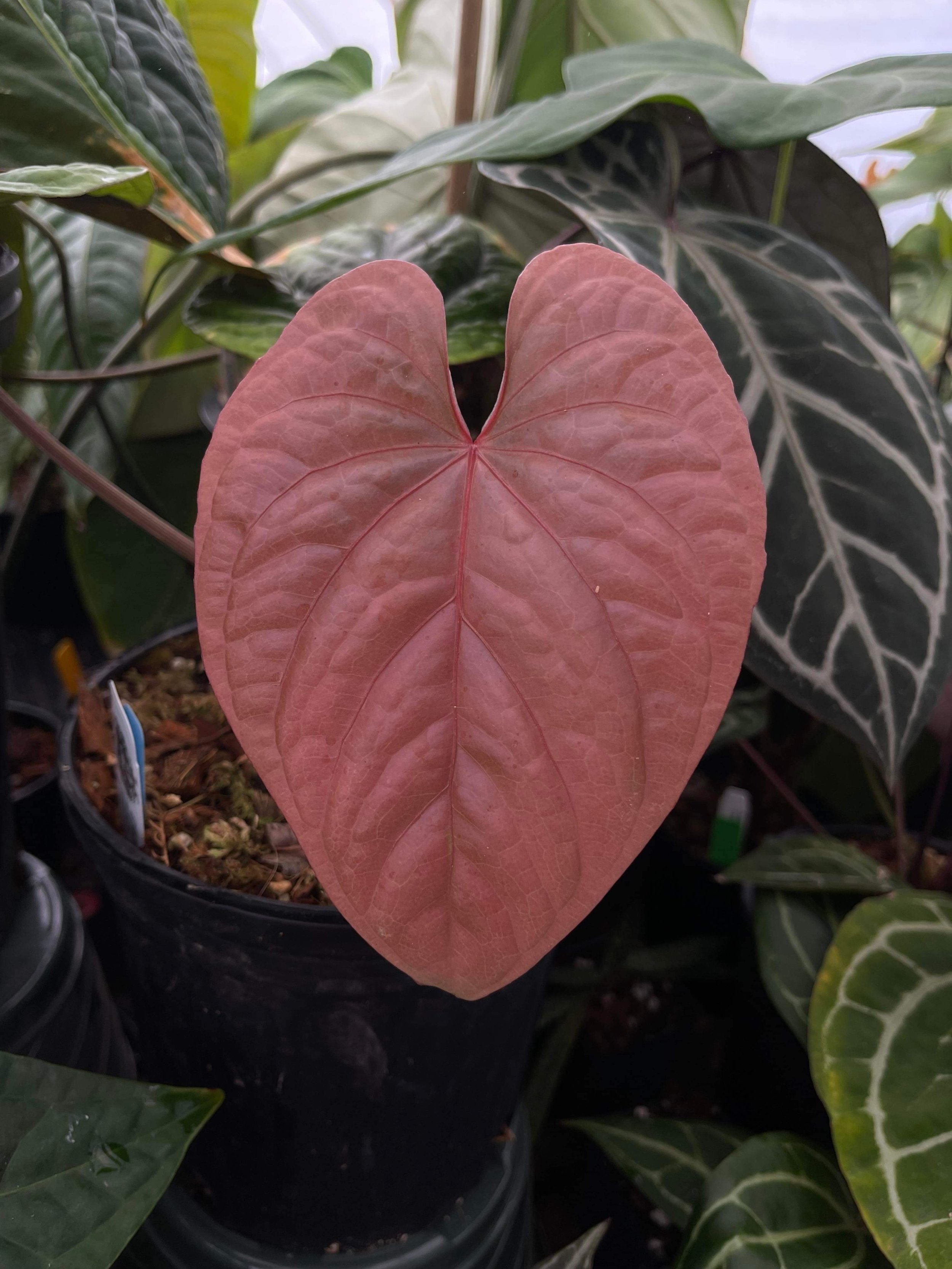Anthurium Debile
(Section cardiolonchium)
Authored by: Roger Fahnert III
**Anthurium debile was the first species that gave me trouble, and was the inspiration for this project for that reason. I fell in love with the species due to its fussy nature. Part of my goal with EVILution is to do what I can to make these plants accessible to as many people as possible. I'm hoping I can give you enough information about this species that you will not only be able to get this species to survive but actually thrive under your care.**
Anthurium debile originates out of the Valle del Cauca region of western Colombia, where it lives happily tucked into riparian settings, in the pluvial cloud forests. Described by Thomas Croat in 2005, it was given the name Anthurium debilis, meaning weak, due to the difficulties it presents to horticulturists, both amateur and experienced. Though it might seem odd, I'm only going to be giving Anthurium debile an ‘Ease of Care’ rating of 3/10. Anthurium debile is definitely more difficult than the average Anthurium, but there are some tricks to help you along the way.
Ease of Care- 3/10
Popularity- 4/10
Emergent - 5/10
Hardened leaf 7/10
Hybrid Potential 9/10
Overall - 5.6/10
Anthurium debile has beautiful dark smokey blue, undulated, sub-velvety leaves. The leaves are quilted and slightly bullate on ribbed petioles, making it one of the most beautiful Anthurium in the genus. The emergents range in color from a copper hue to pink and lack iridescence. The spadix is short and green, turning yellow as it enters receptivity.The pollen is yellow in color and fluffy.
When this species is hybridized with velvety Cardiolanchium species, they take on this absolutely beautiful velvety to sub-velvet texture. Debile often enhances the iridescence of the emergent of its hybrids, and the hardened leaf typically takes on a very unique gray hue. Anthurium debile also does an amazing job at really emphasizing the textures of the leaves in its offspring. The downside is that Anthurium debile also passes on some of its difficulty as well.
Anthurium debile differs from the “EVILution Anthurium Care Guide” in that it does not enjoy drying out at all, as it comes from riparian settings. I will either give it a potting mix that will hold water longer, by adding sphagnum moss, or I will increase the rate at which I water. Pure sphagnum is not a good choice for substrate as debile still wants good airflow around the roots. A good rule of thumb is to water it about two days prior to it drying out. They also like a bit less light than the average Anthurium in order to achieve their richest colors, a PPFD of about 90 is ideal. Depending on your mix, you can also bottom water debile hybrids.
Notable Cultivars include:
Make it stand out
Whatever it is, the way you tell your story online can make all the difference.
‘Elephant Skin’ (Anthurium forgetii x debile) - Roger Fahnert III
‘Boy Blue’ (Anthurium dressleri ‘#2’ x debile ) - Jay Vanini
‘Pachydermis’ (Anthurium crystallinum x debile) - Roger Fahnert III
Other hybrids include:
Anthurium crystallinum x debile
Anthurium papillilaminum (FS x self) x debile - Grant Abadal
Anthurium BVEP x debile
Anthurium debile x luxurians
Anthurium magnificum x debile
Anthurium carlablackiae x debile - Roger Fahnert III
Anthurium Rioclarense (Wild Hybrid) x debile - Grant Abadal

